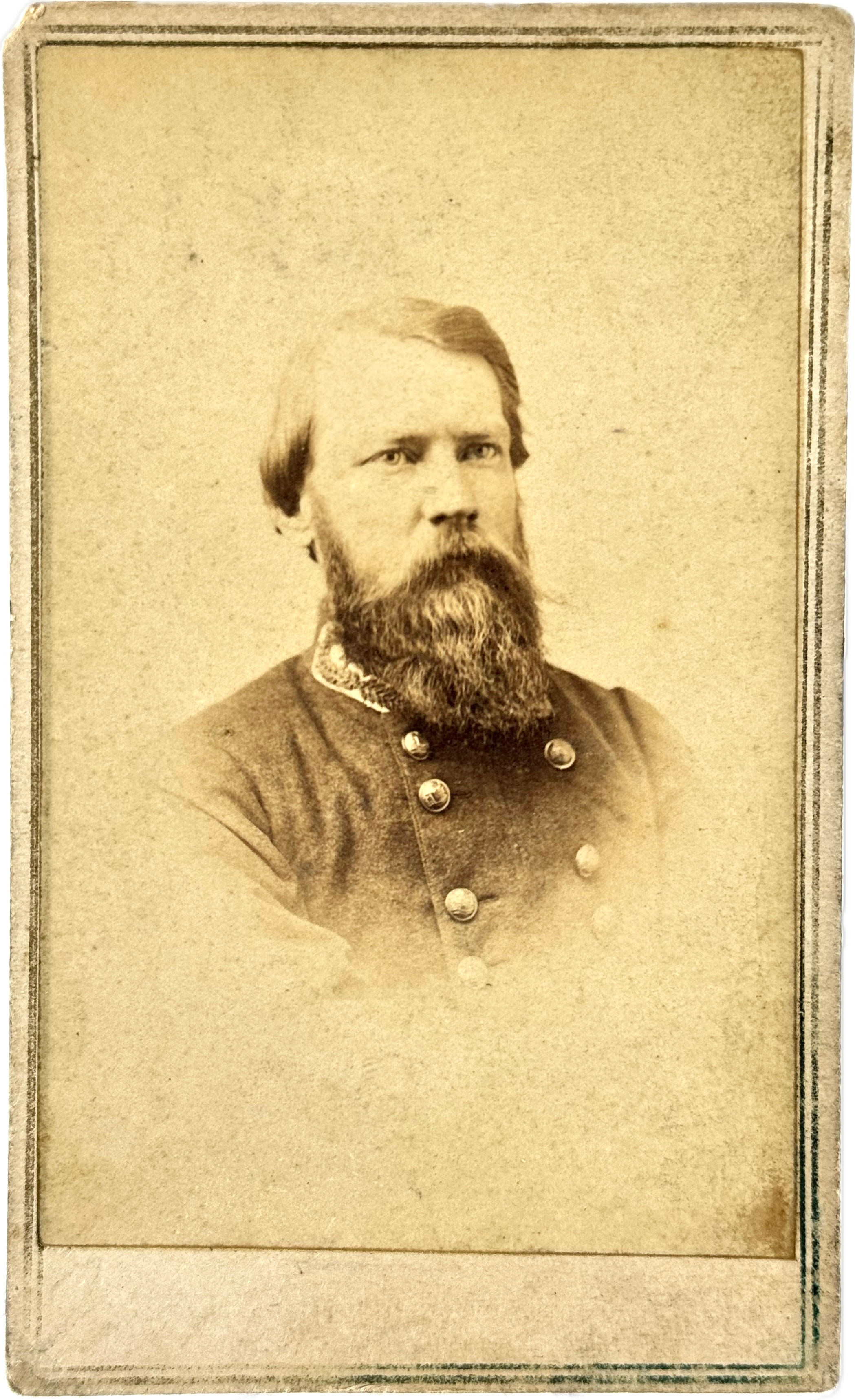Rare CDV of Confederate General Seth Maxwell Barton
This rare carte de visite of Confederate General Seth Maxwell Barton, featuring the desirable G.W. Minnis backmark from Richmond, Virginia, is a remarkable piece of Civil War history. Barton, a lesser-seen Confederate general in period photography, makes this CDV especially scarce and appealing to collectors. Although the image shows wear on the corners with a small loss at the top left, such condition is typical for wartime photographs that were often handled or carried. What stands out is the image’s rarity, the association with a respected Richmond photographer, and its direct connection to Barton, who commanded the 3rd Arkansas Infantry and later a brigade in key battles such as Chancellorsville and Gettysburg. Despite the wear, this remains an important and highly collectible artifact, valued as both a historic photograph and a tangible link to the Confederate military past.
General Seth Maxwell Barton was a Confederate officer who served with distinction during the American Civil War, most notably as the commander of the 3rd Arkansas Infantry Regiment. Born in 1829 in Fredericksburg, Virginia, Barton graduated from the United States Military Academy at West Point in 1849 and went on to serve in the U.S. Army during the Mexican–American War. When the Southern states seceded in 1861, he resigned his U.S. commission and cast his lot with the Confederacy, eventually receiving command responsibilities in the Western and Trans-Mississippi theaters of the war. His early service in the Confederate Army demonstrated his competence as both a disciplinarian and a combat leader.
Barton was appointed colonel of the 3rd Arkansas Infantry Regiment, one of the few Arkansas regiments to serve with the Army of Northern Virginia in the Eastern Theater. The 3rd Arkansas gained a reputation for resilience and fighting spirit under Barton’s leadership, participating in the Peninsula Campaign, the Seven Days Battles, and the Maryland Campaign. Barton’s ability to steady his men under fire contributed to their performance in these bloody engagements. His leadership drew praise from superiors, and he was promoted to brigadier general in 1862, taking command of a brigade composed of several regiments, including his Arkansans.
Despite his solid military record, Barton’s Civil War career was marked by both accomplishments and setbacks. He commanded troops at Fredericksburg, Chancellorsville, and Gettysburg, earning respect for his discipline and organization. However, he also faced accusations of being overly cautious, and late in the war he was relieved of command after conflicts with senior officers. After the Confederacy’s defeat, Barton returned to civilian life, pursuing work as a civil engineer. He spent his later years in Mississippi and Georgia before passing away in 1900. Today, Barton is remembered as a capable if sometimes overlooked Confederate general whose service with the 3rd Arkansas Infantry contributed to that regiment’s reputation as one of the South’s most dependable fighting units.


